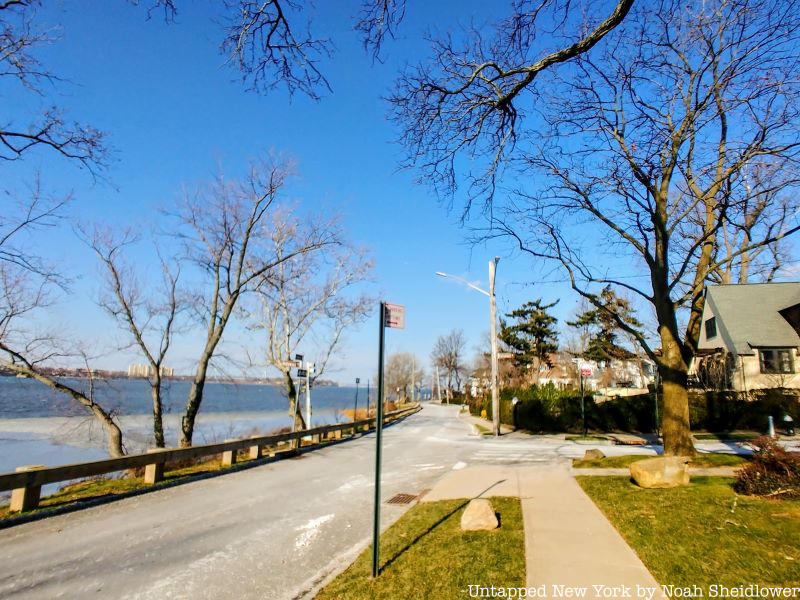
The quiet neighborhood of Douglaston in Queens hides architectural gems, one of New York City’smost unique living organisms, and stories that date to the earliest chapters of New York City’s history. Located near the northern border with Nassau County, bordering Bayside and Little Neck, Douglaston is often grouped with Little Neck as a combined neighborhood on Long Island’s North Shore. Douglaston is home to two historic districts – Douglas Manor and Douglaston Hill – the feature some of the oldest homes in the city. The winding streets are lined with greenery and large homes, some of which have been occupied by famous residents. Here are the top 10 secrets of Douglaston!
1. The Cornelius Van Wyck House dates back to 1735
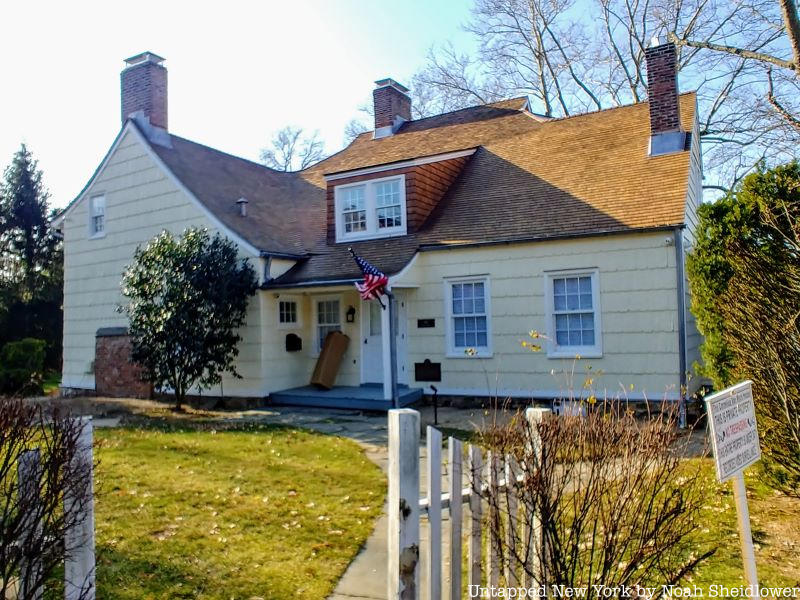
The Cornelius Van Wyck House is one of Queens’ oldest homes. It was built in 1735 by third-generation American Cornelius Van Wyck. The home on West Drive overlooks Little Neck Bay and was described by the Landmarks Preservation Commission as a “picturesque Eighteenth Century Dutch colonial house” with a saltbox roof and hand-hewn shingles. The two-story home is one of the borough’s last Dutch Colonial homes. Its oak beams and Georgian mantlepieces have been maintained over the last three centuries.
Johannes Van Wyck, Cornelius’ father, bought 125 acres of land from the Cornell family in the early 1700s. Cornelius inherited the land in 1734. The home was built on Cornelius’ family farm, which was passed on to his son Stephen and cousin Cornelius after his death. The home stayed with the family until 1819 when it was bought by the Van Zandt family, who converted the home into a guest house as they expanded their farmland further north. Eventually, the home was expanded and added to the National Register of Historic Places in 1983. According to the Landmarks Preservation Commission, the home has “a special character, special historical and aesthetic interest and value as part of the development, heritage and cultural characteristics of New York City.”
2. The Queens Giant is the oldest and tallest tree in NYC
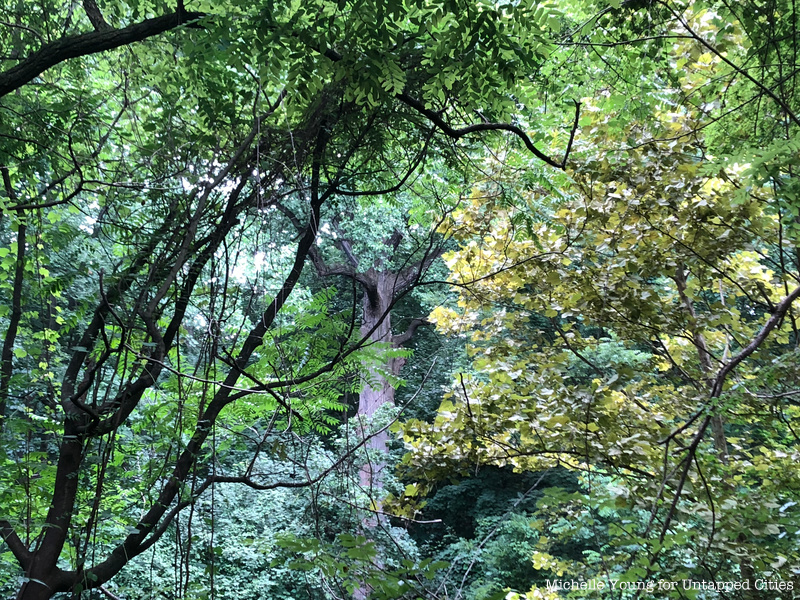
Many New Yorkers would probably expect the tallest tree in the city to stand in Central Park or Prospect Park, or perhaps even the forests of Staten Island. However, the tallest and oldest tree in the city is in Alley Pond Park on the border of Douglaston and Bayside. The Queens Giant, as it is often called, stands at over 134 feet and above 19 feet in girth (it was last measured in 2005). Estimates date it back to well over 350 years ago; the New York Times back in 2004 claimed that it could be as old as 450 years old. The tulip tree was likely just a sapling around the time of (or shortly after) New Amsterdam. It was likely that the tree was already well over a century old when George Washington passed by in 1790.
The tree has been quite difficult to find and access for its very long history. It is located near Douglaston Plaza and now protected by a small fence. Parks Commissioners have defended the decision to keep the tree in relative obscurity to prevent people from jeopardizing its health and long life. Given that tulip trees can live to over 600 years old, the Queens Giant still has plenty of years to go. The tree has survived New York’s rapid urbanization, from Dutch colonization to the modern metropolis it is today. With 5.2 million trees in the city, only one other comes close to the Queens Giant. Another tree of the same species in Clove Lakes, Staten Island, stands at 119 feet tall, making it shorter than the Queens Giant but not younger. “If we leave it undisturbed, it may live among us for another hundred years or so,” a plaque by the tree reads.
3. John McEnroe learned to play tennis at the Douglaston Club
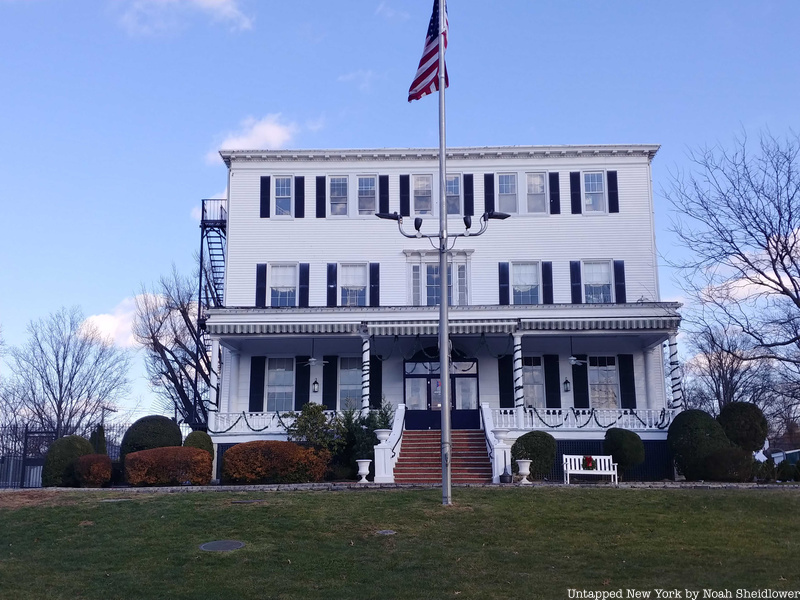
Since 1918, the Douglaston Club has been a private yacht, pool, and tennis club for the Douglaston community. The club is known for its “Yacht Squadron,” as well as its five tennis courts, three bowling lanes, pool, and new kitchen. The land on which the club now stands has been the property of the Hicks, Van Zandt, and Van Wyck families, as well as the Douglas family (whom the town is named for). The building that now houses the club was built by Wynant Van Zandt after he purchased the land from the Weeks family. It was later bought by George Douglas and passed down to his son, William P. Douglas. William was a sailor who, on the yacht Sappho, defended a leg of the 1871 America’s Cup. He often interfaced with the founders of the Douglaston Yacht Club, who included none other than financier J.P. Morgan. Morgan often sailed on Little Neck Bay.
In 1906, the original Van Wyck and The Douglas Manor House became the Douglaston Inn and The Douglaston Country Club. The Douglaston Club opened in 1918 and purchased the Douglaston Inn three years later. By 1927, the Douglaston Yacht Squadron was in full effect. According to club’s website, the Squadron was designed “to promote the science of seamanship and navigation and to provide and maintain a suitable anchorage and facilities for the recreation and use of its members.” Little did anyone at the club know, though, that they would produce one of the greatest tennis players in men’s tennis history. John McEnroe and his brother Patrick began their tennis careers at the club after the family moved to Douglaston when John was four. Originally living at 242-14 43 Ave., the family later moved to 252 Beverly Road, and John began tennis lessons at the club at age eight. Eventually, he would move on to the Port Washington Tennis Academy before going pro in 1978 and winning seven major titles.
4. The founder of a Douglaston church owned perhaps the last slave in New York state
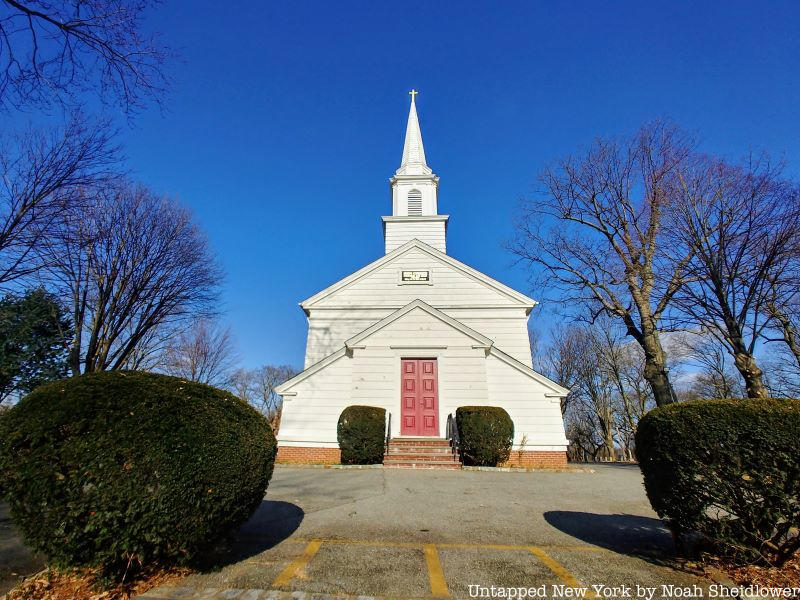
Zion Episcopal Church, which is elevated from Northern Boulevard, was founded in 1830, predating nearly every building still standing in Douglaston. It was founded by merchant and alderman Wynant Van Zandt. Van Zandt ran a 120-acre farm on Little Neck Bay starting in 1813 after his tenure at Manhattan’s Trinity Church. Zion Episcopal Church was built somewhat out of necessity; the Van Zandt family hiked over five miles every Sunday to Christ Church in Manhasset. With 17 of his neighbors (and significant personal contributions), he crowdfunded enough funds to construct the church, laying the cornerstone in 1829. Van Zandt only worshipped at the church for a year before passing away, and he was buried in a family vault behind the church.
The church had no raised altar nor a middle aisle for the pews, but it was stable and brought comfort (and convenience) to the Douglaston community, which began growing in the 1870s. The population grew after the Flushing and North Side Railroad linked the neighborhood with the rest of the city. A new Parish House was erected in 1896, though in 1924, a massive fire destroyed the historic building. A new church was built in the Colonial style by 1927, but a second fire in 1929 destroyed a handful of rooms.
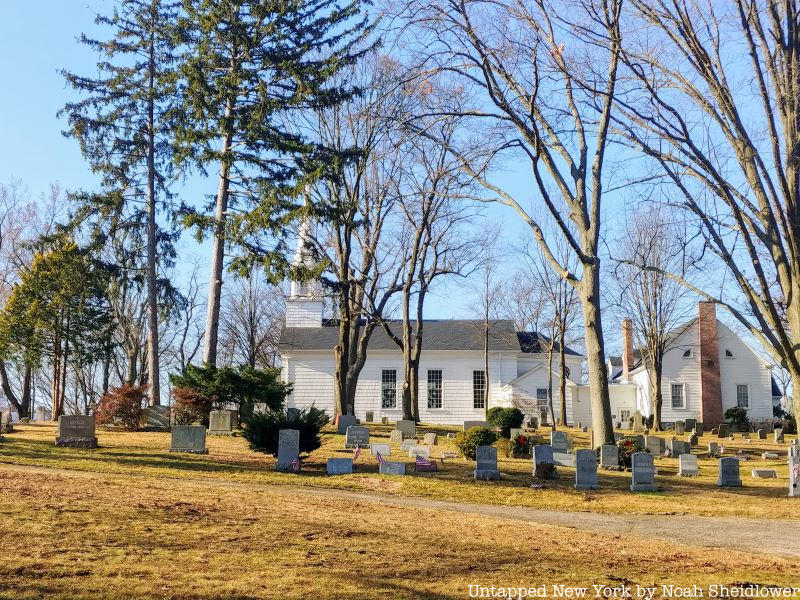
Before the church was erected, the Van Zandt family relied on the labor of slaves, as did many wealthy families in New York. However, while many freed their slaves in the late 1700s, the family kept a woman named Margaret Pine until 1813. Pine, whose resting place is at Green-Wood Cemetery, was born in Westchester in 1778 to parents enslaved by Israel Underhill. In 1806 at age 28, Pine became the property of Underhill’s daughter Maria Van Zandt, and for the next seven years, she was a nurse for the Van Zandt family’s 11 sons. Wynant Van Zandt issued her manumission (or her release from slavery) in 1813. Described as “sober, honest, and faithful” but “averse to living in the country,” Pine was granted permission to live in New York City.
However, a Brooklyn Star article honoring her death noted that she refused to be manumitted: “She told her master, when he proposed to do so, that he had her services for the best part of her life, and that she wished him to take care of her as long as she lived, and he willingly consented.” Therefore, she technically was still enslaved when she died in 1857, living “like a sincere Christian, and died like one, cheerful, and without a struggle, to the last.” This would make her the last slave of New York State, according to Green-Wood Cemetery. She spent most of her “free” life in Manhattan, settling down at 72 Thompson Street on a block with neighbors mostly of African American descent.
5. The neighborhood’s namesake helped bring polo to the U.S.
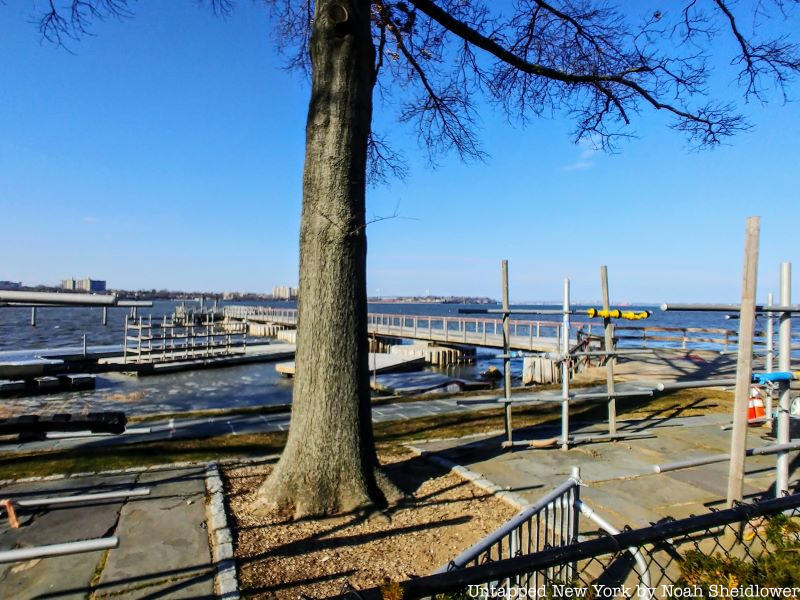
As mentioned earlier, Douglaston gets its name from William Douglas, whom many described as a playboy. He was a yacht racer, winning the top yachting prize in 1871 on his $50,000 yacht. He used many of his winnings to expand the family’s Douglaston property, as well as to live a lavish life in Manhattan. He spent many hours a week at the Union Club. He also donated a station to the North Shore Railroad, which later became absorbed into the Long Island Rail Road. Many people in the community despised Douglas, who tried to crown himself “Earl of Douglas” and lashed out at people who attempted to fish on his property. William’s father George was quite the opposite, a devoutly religious man who gave thousands to charitable and religious organizations including the American Bible Society.
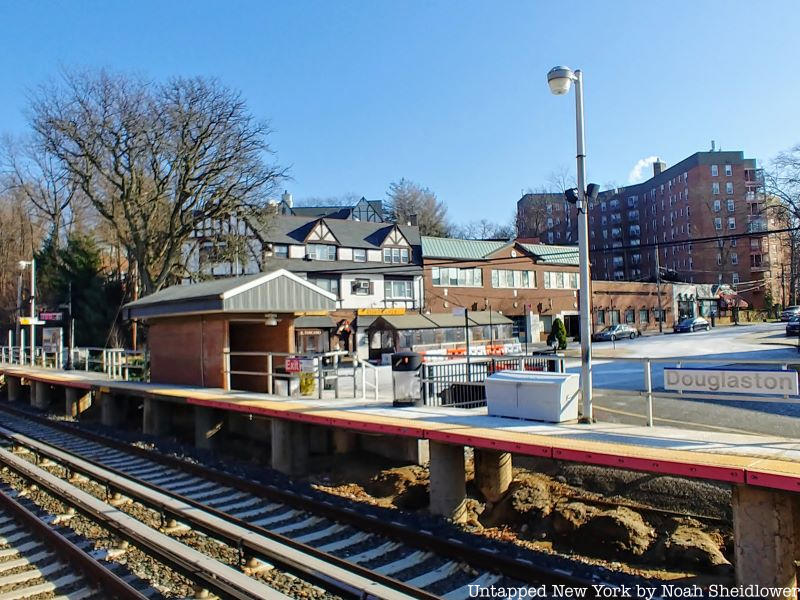
While on his yachting adventures, William Douglas befriended James Gordon Bennett, publisher of the New York Herald who sponsored Henry Morton Stanley’s African expedition to find David Livingstone. Douglas won the first trans-oceanic yacht race and served as commodore of the New York Yacht Club. Bennett became engaged to the sister of Douglas’ wife Adelaide, though this relationship ended their friendship; at a party, a drunken Bennett got into a duel with his ex-fiancee’s brother. However, before this contentious separation, Bennett joined Douglas in many sports, including polo. Bennett is today widely attributed witb bringing polo to the U.S., hosting a tournament with Douglas in Manhattan. It was held at Dickel’s Riding Academy at 39th Street and Fifth Avenue, and its success led to the development of the Westchester Polo Club in 1876.
6. The Allen-Beville House is one of Queens’ last remaining farmhouses
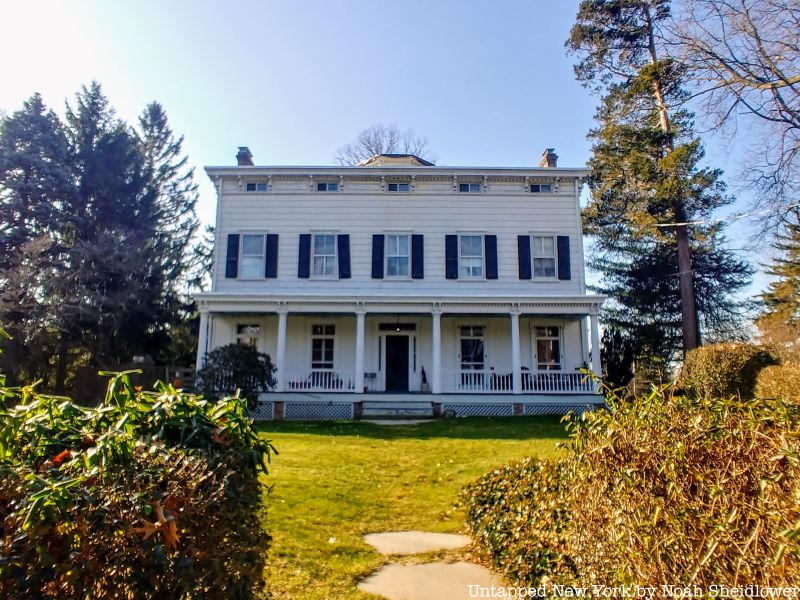
The Allen-Beville House is one of the oldest homes in Douglaston and one of the borough’s last remaining farmhouses. The home was constructed between 1848 and 1850 in the Italianate and Greek Revival style, located on Center Drive. The land was acquired by Benjamin Allen, a farmer of some wealth who lived in a large home in Flushing Township. The Douglaston home was valued at about $20,000 a decade after it was built, and Allen lived in the home with his wife and children, as well as a few laborers. Beginning in 1866, he became a vestryman for the nearby Zion Episcopal Church after his retirement. He would open up part of the home for children in the neighborhood.
The home was an architectural standout around the time it was built, standing at 2.5 stories with an octagonal cupola and porches with Doric columns. Windows are flanked by supporting brackets, and there are two grand entrances with Queen Anne doors. William P. Douglas, the namesake of Douglaston, purchased the home in the late 19th century. It was originally used as a guest house and later served as inspiration for the Douglaston Club. The home was later sold to the Douglas Manor Company and then purchased by the Beville family in 1946. It was added to the National Register of Historic Places in 1983 and was sold in 2006 for $2.5 million.
7. A Native American cemetery was located at modern-day Zion Episcopal Church
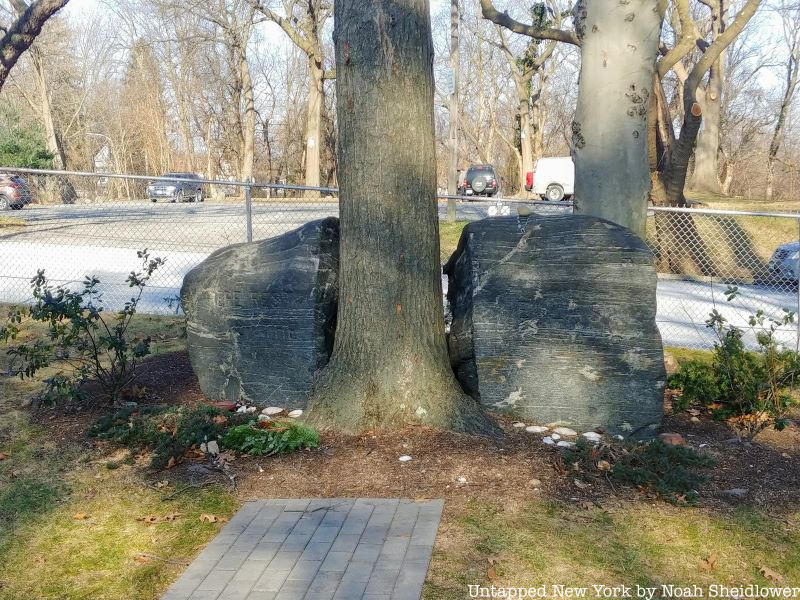
For the last century or so, Zion Episcopal Church’s churchyard has been preserved, including weathered markers of families who helped found the church and some notable markers for Caroline Bissell and Mary Buhrman. Two men from Mark Twain’s Innocents Abroad are also buried at the cemetery; one of the more notable graves belongs to Bloodgood Haviland Cutter, who helped expand the churchyard and was described by Twain as a “simple-minded, honest, old-fashioned farmer with a strange proclivity for writing rhymes.” The cemetery’s cedar trees tower over Northern Boulevard below and stand near other graves.
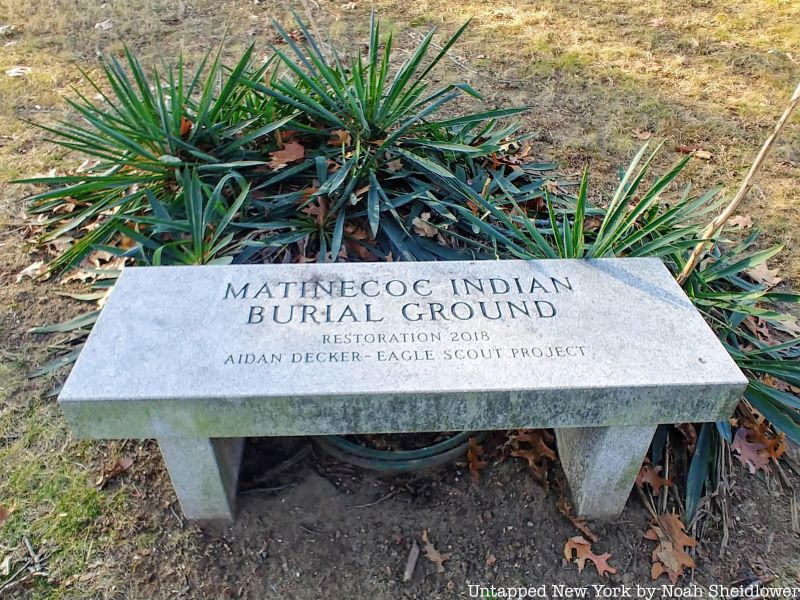
One of the most fascinating parts of the churchyard is the Matinecock reburial site. On November 1, 1931, about 30 bodily remains of the area’s Matinecock tribe were reinterred at the churchyard after their original resting place was disturbed by the expansion of Northern Boulevard. The decision to expand the road to four lanes was met with significant pushback, especially from the local Native American communities. The remains at the original burial ground were removed and reburied at the Zion Episcopal churchyard alongside a stone inscription that reads, “Here rest the last of the Matinecoc.” In 2018, Chief Harry Wallace led a homecoming burial ceremony at the site after more Matinecock remains were repatriated from the Museum of Arts and Sciences in Florida.
8. An early female architect designed the town’s unique Arts & Crafts-style homes
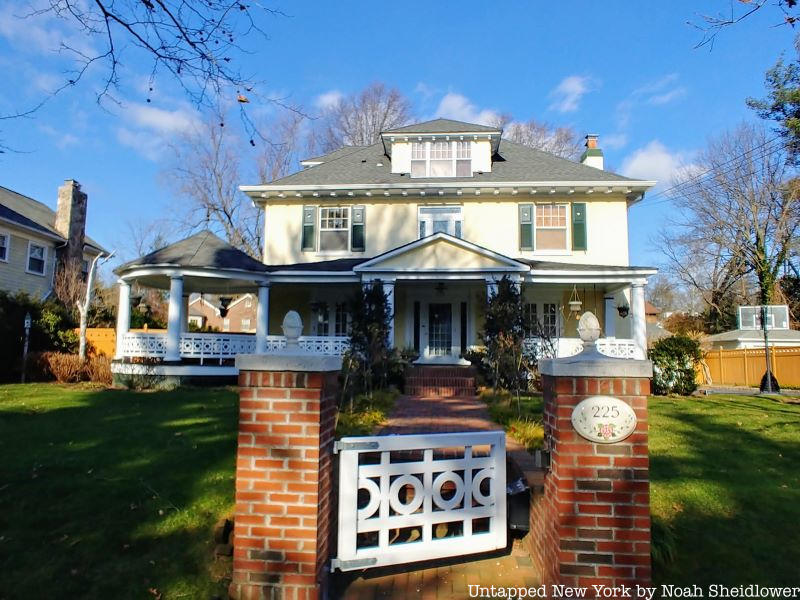
Douglas Manor, located within the Douglaston Historic District, is known among architecture enthusiasts for its dozens of historic homes, many of which were created in the Arts & Crafts style. This style, in response to Victorian architecture, embraced handcrafted designs using more readily available materials, replacing the mass-produced with the more personal. The first Arts & Crafts homes were bungalow-style structures, typically low to the ground with small-pane windows and low-pitched roofs. Many of the 600 houses in Douglas Manor exemplified the romantic and eclectic early 20th-century style that highlighted beauty, simplicity, utility, and organic harmony. Many homes were developed by the Rickert-Finlay Company as part of a planned suburb in styles including Colonial Revival, Tudor Revival, and English Cottage. Three Craftsman-type homes draw heavily from the style of George Stickley, while another eight were designed by one of the country’s first successful female architects, Josephine Wright Chapman.
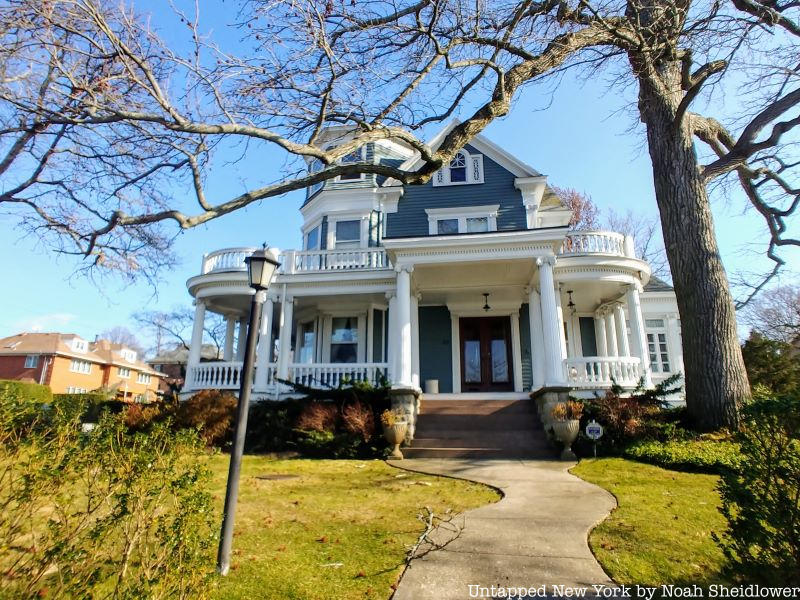
For Jane’s Walk 2018, Kevin Wolfe Architect outlined a few of Douglas Manor’s historic homes, many of which appeared in The Craftsman magazine over a century ago. 140 Prospect Avenue, a gray stucco home, draws on Stickley’s contrast of solid and void with its outside balcony and covered porch. Similarly, 225 Hillside Avenue draws from Arts & Crafts style, as well as a Queen Anne-style circular tower and Classical railings. Classical columns and an open piazza feature at another Arts & Crafts home at 104 Hollywood Avenue. Other notable homes from the walk included 309 Hillside Avenue, described as a “Medieval Spanish Baroque Revival” mansion; 329 Forest Road, built with Norwegian features for artist Trygve Hammer’s studio; and 28 Shore Road in the late Queen Anne style.
9. Ruth Benedict and Ginger Rogers lived in Douglaston
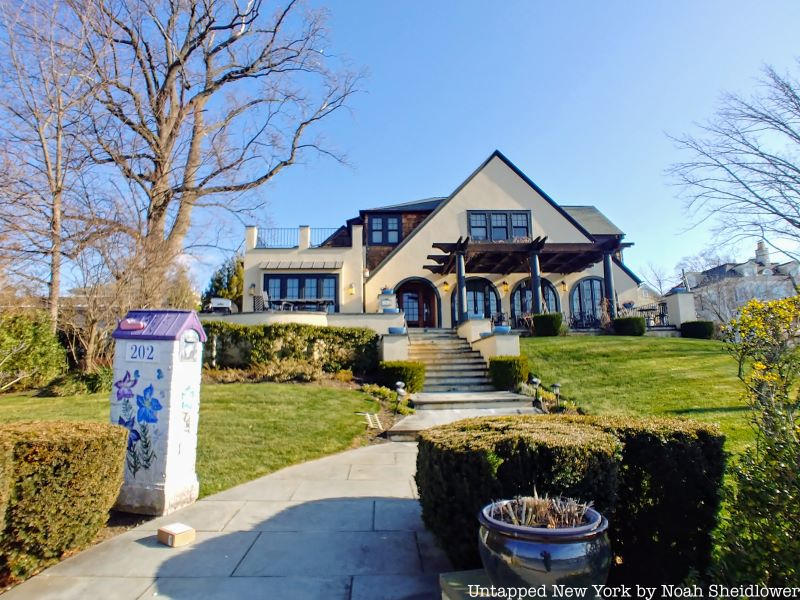
Given Douglaston’s historic (and wealthy) past, the quaint waterfront neighborhood was bound to have attracted some of New York’s most famous celebrities and academics. Perhaps the most famous resident was Ruth Benedict, the anthropologist behind The Chrysanthemum and the Sword and Patterns of Culture. The Vassar College graduate married chemist Stanley Rossiter Benedict in 1914. After marrying, Benedict moved to Douglaston, though little is known about her time there. Another esteemed resident was Ginger Rogers, who moved briefly to Douglaston after being chosen to star in the Gershwin musical “Girl Crazy.” She signed a seven-year contract with Paramount Pictures in 1930, so she took residence in Douglaston to be closer to Astoria Studios.
The address 202 Shore Road housed two notable residents: German artist George Grosz and Chilean pianist Claudio Arrau. Grosz, a Dada artist prominent during the Weimar Republic, was known for caricatures and drawings of Berlin life before moving to New York in 1933. He is perhaps most known for his work Cain, or Hitler in Hell, created while he was in the United States. Arrau was often grouped with some of the legendary 20th-century pianists, known for performing the works of Beethoven, Bach, Chopin, and Schubert. Annette Kellerman, an Australian swimmer and vaudeville star, also lived in Douglaston. Her home features a sign that reads “COO-EE,” a shout that originated in Australia often to attract attention.
10. There is a secret waterfront in Douglaston
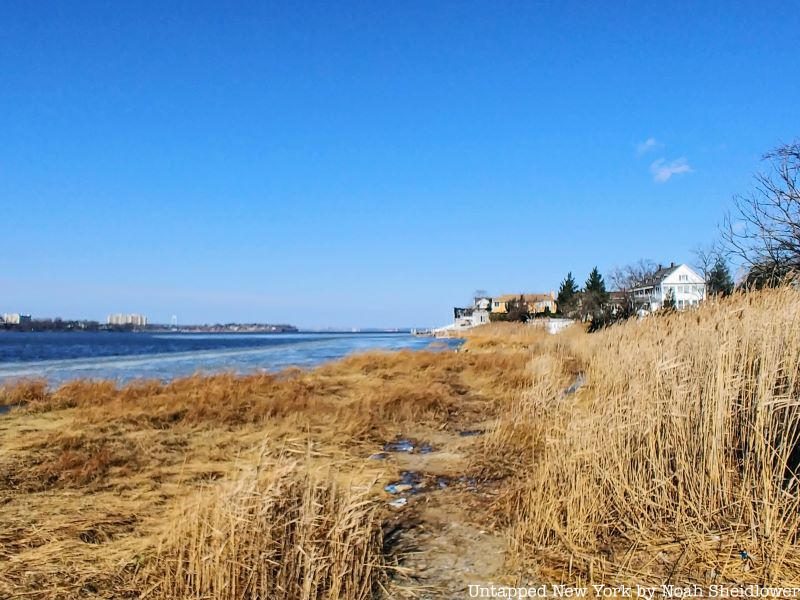
Douglaston has quite a few secret and rarely traversed hiking trails across Udalls Cove Park Preserve and Alley Pond Park. One trail few know about is located off 233rd Street and 39th Avenue, which leads to a secret waterfront, albeit a quite polluted one. The beach leads to Alley Creek with a view of the Cross Island Parkway. It is sometimes frequented by amateur fishermen, though most of the time the beach is empty aside from wildlife.
On the other side of the peninsula are some rather weathered trails near Memorial Park, which lead to waterfront views of the Throgs Neck Bridge. Another rarely traveled trail winds behind Mizumi and Douglaston Auto Care, which passes through tall reeds and a small creek.
Next, check out the Top 10 Secrets of Bayside!





